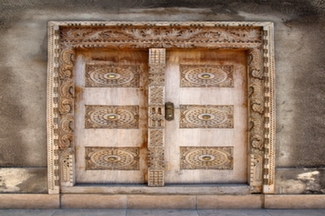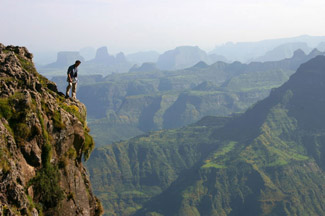UNESCO (The United Nation’s Educational, Scientific and Cultural Organisation) runs a programme to protect and maintain places that are extremely important either for conservation of the environment or culturally important sites. These places are given UNESCO World Heritage Site status in order to protect them under international law and to be able to raise funds to help secure their protection for the future. There are currently 981 sites worldwide of which 759 are cultural and 193 are natural and 29 are both.
So how many are there in Africa? Well, there are an amazing 94 UNESCO World Heritage Sites and they range from all kinds of natural environment to incredible ancient cultural sites. Unsurprisingly really considering Africa is the birthplace of mankind and also home to some of the most diverse landscapes and wildlife on the planet.
In Southern Africa there are some incredible sites all worth visiting. In Zimbabwe you have Mana Pools National Park, the Great Zimbabwe Monument and of course shared with Zambia the world famous Mosi-oa-Tunya otherwise known as Victoria Falls. In South Africa you can visit various Humanid Fossil Sites or the stunning beautiful Drakensburg region. In Namibia there is the Namib Sand Sea with its enormous sand dunes and Twyfelfontein. In neighbouring Botswana its Tsodilo makes the list and in Malawi it’s the Lake Malawi National Park and the ancient rock art of Chongoni.
In Eastern Africa there are so many UNESCO World Heritage Sites you would have to return many times over to see them all. In Ethiopia there are the famous cultural sites of Lalibela, Aksum, the Omo Valley and Fasil Ghebbi in Gondar but did you know that the stunning Simien Mountains were also a world heritage site under UNESCO’s protection? Other cultural sites include Stone Town on Zanzibar, Fort Jesus in Mombasa, Lamu’s Old Town in Kenya and the rock art sites of Kondoa in Tanzania.
Of course East Africa is famous for its stunning scenery and much of this has world heritage status including the Ngorongoro Conservation Area, Serengeti National Park, Selous Game Reserve and Kilimanjaro National Park – and that’s just Tanzania. In Kenya the Great Lake region of the Rift Valley, Lake Turkana National Park and Mount Kenya National Park are all protected with this status. Over in neighbouring Uganda the Bwindi Impenetrable Forest National Park and the Rwenzori National Park are both world heritage sites as is the Virunga National Park in Rwanda. And last but not least one of our favourite destinations in Mozambique, the island of Mozambique itself has world heritage status.
In fact Africa has so many important sites that another umbrella group was set up to run the programme. The African World Heritage Fund (AWHF) is the first regional funding initiative within the framework of the UNESCO World Heritage Convention. Created in 2006 through a joint initiative by the Government of South Africa, the African Union and UNESCO, the African World Heritage Fund is an intergovernmental organization based in South Africa whose mission is to assist African countries in: increasing the number of African sites on the UNESCO World Heritage List, conserving and managing natural and cultural heritage, rehabilitating sites on the list of World Heritage in Danger, training heritage experts and site managers, and ensuring the participation of local communities in decisions concerning their heritage and to ensure that they receive tangible benefits from World Heritage. On Friday 31 January 2014, UNESCO joined forces with the African Union Commission to raise awareness and funds for the African World Heritage Fund (AWHF) during the African Union (AU) Heads of State luncheon at the AU Headquarters in Addis Ababa, Ethiopia. Participants pledged a total of three million US dollars in support of the AWHF Endowment Fund.
It is good to know that these amazing beautiful and historic places are being actively protected and that future generations will be able to enjoy them and learn from them as we have. The only problem I have is trying to decide which one to visit next……….
Posted by Ruth


